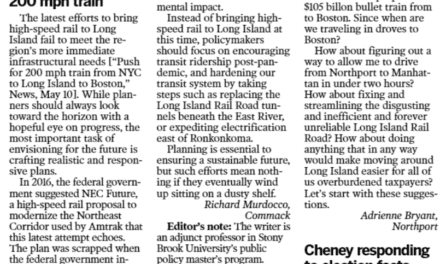Soon, the Long Island Rail Road could cease to operate thanks to a prolonged labor dispute with the Metropolitan Transportation Authority. The clock is ticking, and both sides are a “gulf” apart.
While both sides hash it out, Long Islanders are caught in the crossfire.
As Long Island Association President Kevin Law aptly put it, it’s hard enough doing business in the region when things are going smoothly. Now, with the threat of a strike looming, Long Islanders are scrambling to make precautionary plans on getting to work, setting up telecommute options or simply burning off unused vacation days.
The impacts of an LIRR strike will resonate across Long Island. According to data cultivated by Suffolk County from 2008 to 2012, a total of roughly 1,117,742 Long Islanders drive to work, while 103,069 residents take the train. The burden the strike will place on each county is unevenly distributed. Of these total riders, 69,942 are from Nassau while 33,127 come from Suffolk. Add these commuters to our already over-burdened transportation network, and we’re all in for a rough ride, but Suffolk County will feel less pain than Nassau.
Suffolk County commuters may luck out if the LIRR strike happens thanks to a decreased reliance on New York City for its labor force. As of 2008, the average commute for a Suffolk resident was 29.8 minutes. 75.7 percent of the county’s workforce is employed within the county itself. Only 40,822 Suffolk commuters travel to Manhattan, comprising 5.1 percent of the county’s total labor force, and only 1.6 percent of Manhattan’s total. In total, 81,039 or 10.2 percent of Suffolk’s workers travel to the boroughs of New York City. Thanks to the LIRR’s primary function as an east-west commuter railroad, you can assume few workers use the system for intra-Island commuting.
In February of last year, I wrote the following on this very page:
If the growth potential of our region is strong with investment in the railroad, imagine what dividends further investment in all aspects of our transportation network would pay. If we can all work together across municipal lines and craft a regional approach to solving our transportation issues, addressing Long Island’s other needs such as the provision of affordable housing for all ages, the need for economic growth and a diversification of our local economy will be much easier.
Now, it would be silly to sit here and say “the LIRR going on strike shows the importance of investment in our road system,” because we shouldn’t need an LIRR strike to highlight the marked regional need for more investment in our roads, bridges, overpasses and tunnels. A looming strike does however show the marked need for a diversification of our modes of transportation. The LIRR is a complex fragile network that is the economic lifeline for the Nassau-Suffolk region. If we begin investing in Long Island’s employment centers, as well as bringing our road network up to 21st century standards (at this point, even late-20th century would be welcome), we won’t be as susceptible to work stoppages and transit outages which, if prolonged, can cripple our region.
Sound planning incorporates a maximization of our existing assets. Let’s harden our transportation network, which will in turn strengthen our economy.











